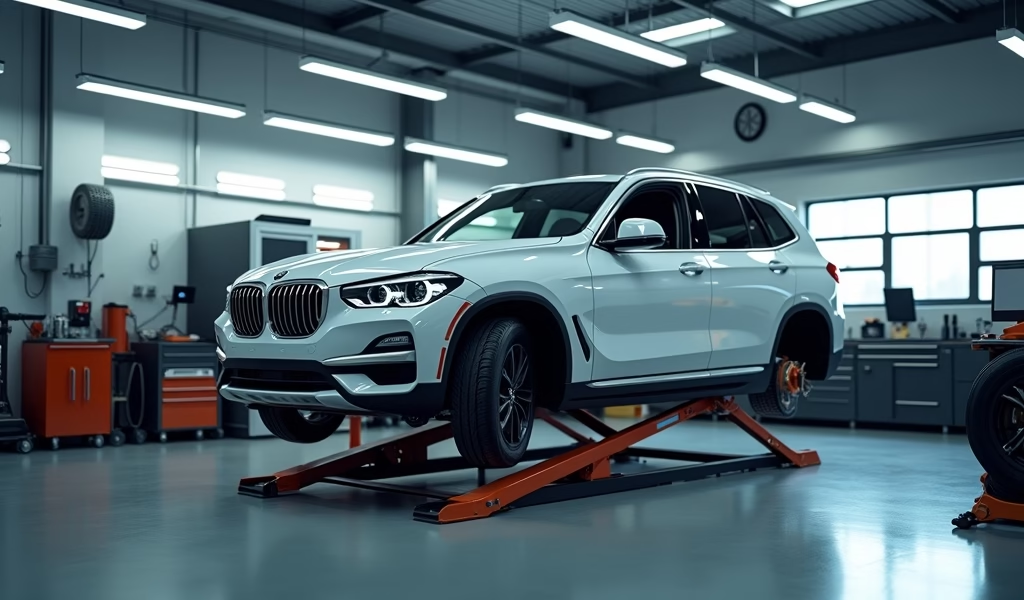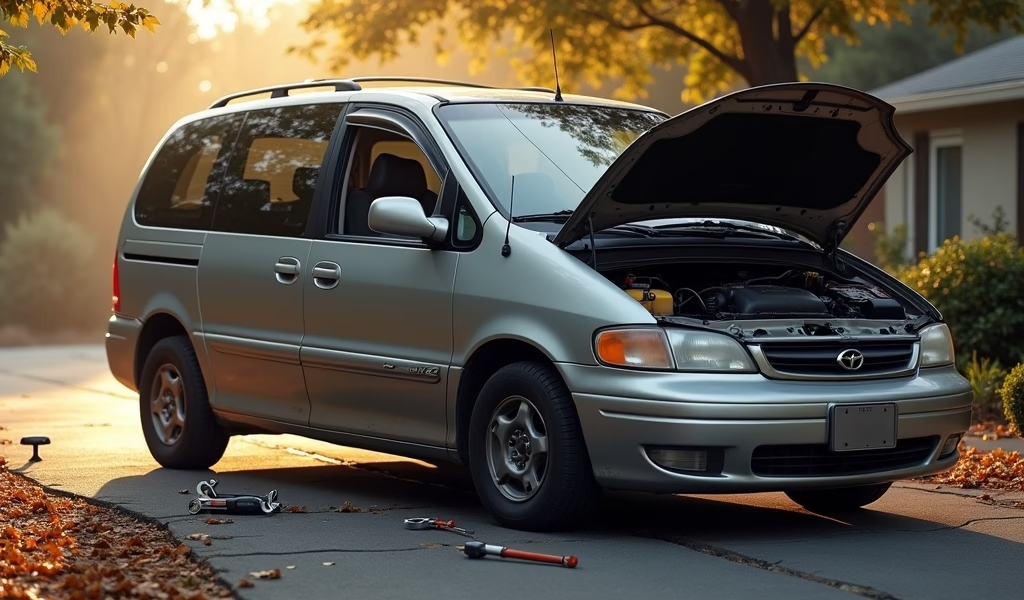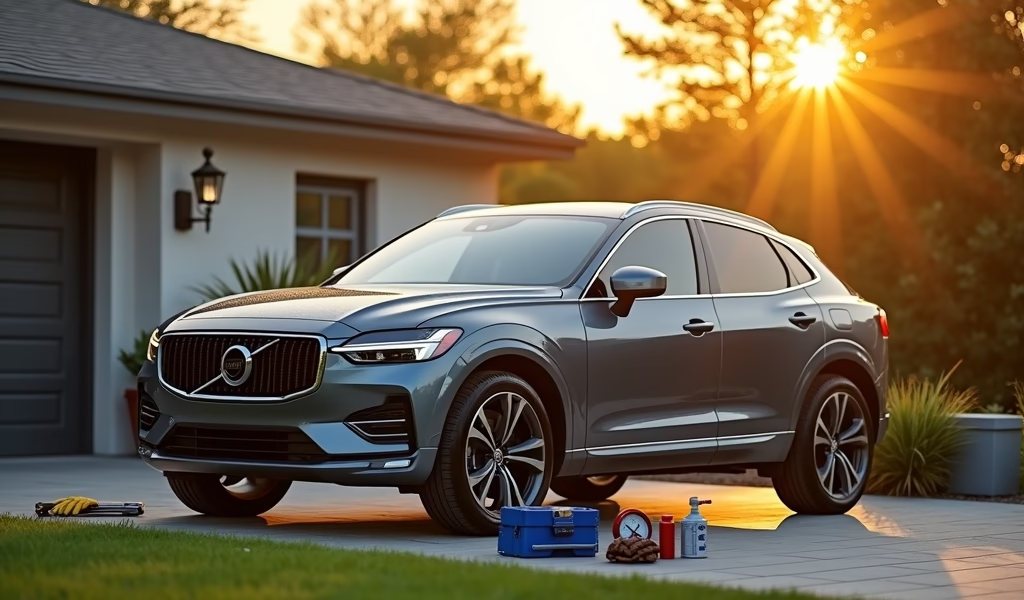Overview
This guide provides seven essential maintenance tips for family vehicles, including regular oil changes, tire care, brake maintenance, filter replacements, battery care, professional inspections, and interior cleaning. Proper maintenance not only ensures safety and reliability for precious cargo but also extends vehicle life beyond 200,000 miles, improves fuel efficiency, and preserves resale value.
Table of Contents
- Why Maintenance Matters for Family Vehicles
- What Makes a Car “Family-Friendly”?
- Tip #1: Regular Oil Changes and Fluid Checks
- Tip #2: Tire Care and Rotation
- Tip #3: Brake System Maintenance
- Tip #4: Air Filter and Cabin Filter Replacement
- Tip #5: Battery Care and Testing
- Tip #6: Regular Professional Inspections
- Tip #7: Interior Cleaning and Maintenance
- Conclusion
- Frequently Asked Questions
Why Maintenance Matters for Family Vehicles
When it comes to finding reliable vehicles for your family, proper maintenance is just as important as making the right purchase. As a mechanic with 20 years of experience working on family vehicles, I’ve seen firsthand how regular maintenance can mean the difference between a car that lasts 100,000 miles and one that cruises past 250,000 miles.
Family cars face unique challenges. They endure frequent short trips, carry precious cargo, and often double as mobile dining rooms, entertainment centers, and sometimes even temporary changing stations. Your family vehicle isn’t just transportation—it’s a crucial part of your daily life that needs to perform reliably every time you turn the key.
Proper maintenance isn’t just about preventing breakdowns (though that’s certainly important when you’ve got a car full of kids). It’s about safety, fuel efficiency, and protecting what for many families is one of their largest investments. According to Consumer Reports, proper maintenance can save you thousands of dollars over the life of your vehicle.
What Makes a Car “Family-Friendly”?
Before diving into maintenance, let’s quickly discuss what makes a vehicle “family-friendly” in the first place. The best family cars typically offer a combination of space, safety features, reliability, and versatility.
Today’s top family vehicles include SUVs like the Honda CR-V and Toyota RAV4, minivans such as the Honda Odyssey and Chrysler Pacifica, and even spacious sedans like the Toyota Camry. These vehicles share common traits that make them ideal for family life:
- Generous passenger and cargo space
- Top safety ratings and advanced safety features
- Excellent reliability records
- Family-friendly features (multiple USB ports, easy-clean surfaces)
- Good fuel economy
Whether you’ve chosen a minivan, SUV, or a roomy sedan as your reliable family vehicle, the following maintenance tips will help ensure it serves your family faithfully for many years to come.

Tip #1: Regular Oil Changes and Fluid Checks
Think of your car’s oil as its lifeblood. Just like we need clean blood flowing through our veins, your engine needs clean oil circulating to function properly. Oil lubricates moving parts, helps cool the engine, and carries away contaminants.
For most modern family vehicles, oil changes are recommended every 5,000-7,500 miles, though some newer models using synthetic oil may go 10,000 miles between changes. Check your owner’s manual for the specific recommendation for your vehicle.
But oil isn’t the only fluid your family car depends on. Here’s a quick rundown of the essential fluids to check regularly:
- Engine oil – Check monthly and before long trips
- Coolant – Prevents overheating and freezing
- Brake fluid – Ensures stopping power when you need it most
- Transmission fluid – Allows smooth gear shifts
- Power steering fluid – Makes steering manageable
- Windshield washer fluid – Keeps your view clear
I recommend creating a monthly “fluid check Friday” routine. It takes just 5 minutes, and you can even involve the kids as a quick lesson in how cars work. You’d be surprised how many major repairs I’ve seen that could have been prevented by simply monitoring fluid levels.
Tip #2: Tire Care and Rotation
Your tires are literally where the rubber meets the road, and they’re crucial for your family’s safety. Proper tire maintenance involves several key practices that too many families overlook.
First, maintain proper inflation pressure. Underinflated tires waste fuel and wear out prematurely, while overinflated tires provide less traction and a harsher ride. The correct pressure for your vehicle is typically listed on a sticker inside the driver’s door jamb—not on the tire itself!
Second, rotate your tires every 5,000-7,000 miles. This ensures even wear and can extend tire life by thousands of miles. Front and rear tires wear differently, especially on front-wheel drive vehicles (which most family cars are).
Third, check tread depth regularly. The old penny test works well—insert a penny with Lincoln’s head upside down into the tread. If you can see all of Lincoln’s head, it’s time for new tires.
Finally, consider seasonal needs. If you live where winters bring snow and ice, dedicated winter tires provide dramatically improved safety. I’ve seen too many families skid off roads in winter while running all-season tires, which are really just a compromise for mild conditions.
Tip #3: Brake System Maintenance
When it comes to family safety, few systems in your vehicle are as critical as your brakes. As a mechanic who’s worked on thousands of family vehicles, I can tell you that brake issues are among the most common problems I see—and unfortunately, they’re often neglected until it’s too late.
Watch for these warning signs of brake problems:
- Squealing or grinding noises
- Vibration when braking
- Pulling to one side during braking
- Soft or spongy brake pedal feel
- Longer stopping distances than normal
Most family vehicles benefit from brake inspections every 10,000 miles or annually, whichever comes first. This typically involves checking pad thickness, rotor condition, brake fluid quality, and overall system integrity.
One often-overlooked aspect of brake maintenance is brake fluid. It’s hygroscopic, meaning it absorbs moisture from the air over time. This moisture reduces braking efficiency and can corrode internal components. According to the Car and Driver, most manufacturers recommend changing brake fluid every 2-3 years, regardless of mileage.
Tip #4: Air Filter and Cabin Filter Replacement
Your family car needs clean air just like your family does. There are actually two different air filters in most modern vehicles, and both need regular attention.
The engine air filter prevents dust, pollen, and debris from entering your engine. A clogged air filter can reduce fuel economy by up to 10% and potentially cause long-term engine damage. Most family vehicles need a new engine air filter every 15,000-30,000 miles, but dusty environments may require more frequent replacement.
The cabin air filter, meanwhile, purifies the air your family breathes inside the vehicle. It traps pollen, dust, and pollutants before they can enter the passenger compartment. If anyone in your family suffers from allergies or asthma, regular cabin filter replacement is particularly important.
Both filters are often DIY-friendly replacements that can save you money while improving vehicle performance and family comfort. I usually recommend checking both filters every 15,000 miles and replacing them when visibly dirty—don’t just go by the mileage recommendations.

Tip #5: Battery Care and Testing
Nothing throws off a busy family schedule like a car that won’t start. Modern batteries typically last 3-5 years, but factors like extreme temperatures and short-trip driving (common in family vehicles) can significantly shorten battery life.
Watch for these warning signs of impending battery failure:
- Engine cranks slowly when starting
- Headlights dim when idling
- Battery warning light appears on dashboard
- Electronic systems behaving erratically
- Battery is more than 3 years old
To extend battery life:
- Keep terminals clean and tight (a little baking soda and water works wonders)
- Limit short trips where possible (batteries need time to recharge)
- Consider a battery maintainer for vehicles that sit unused for extended periods
- Have your charging system tested annually after the battery reaches 2 years of age
Pro tip: Keep a quality set of jumper cables or a portable jump starter in your family vehicle. It’s a small investment that can save enormous hassle when you least expect it.
Tip #6: Regular Professional Inspections
Even the most diligent DIY maintenance can’t replace professional inspections. For family vehicles, I recommend comprehensive inspections at least annually, ideally before major travel seasons or road trips.
A thorough inspection should include:
- Suspension components and steering systems
- Exhaust system integrity
- Belt and hose condition
- Comprehensive electrical system check
- Fuel system evaluation
- Undercarriage inspection for leaks or damage
Finding a trustworthy mechanic for your family vehicle involves more than just comparing prices. Look for shops that:
- Specialize in your vehicle make
- Explain findings clearly without pressure tactics
- Welcome questions and family involvement
- Provide detailed estimates before work begins
- Have positive reviews from other families
Building a relationship with a reliable service center means having someone who knows your vehicle’s history and your family’s needs—a valuable resource for years to come. In my experience, the best shops focus on preventing problems rather than just fixing them after they occur.
Tip #7: Interior Cleaning and Maintenance
Your family likely spends hours each week inside your vehicle. Keeping this space clean isn’t just about appearances—it’s about health, comfort, and preserving resale value.
I recommend implementing these practices for a family-friendly interior:
- Weekly quick-clean sessions (10 minutes of gathering trash and wiping surfaces)
- Monthly deeper cleaning (vacuum, clean windows, treat dashboard)
- Quarterly detail (clean vents, condition upholstery, treat stains)
For families with young children, consider these specific interior maintenance tips:
- Use seat protectors under child safety seats
- Install all-weather floor mats that can be removed and hosed off
- Keep a small trash container accessible to all passengers
- Store cleaning wipes for quick spill management
- Consider scotchguard or similar protection for fabric seats
- Create dedicated storage solutions for family essentials
The family car often becomes an extension of your living space. Treating it with the same care you give your home makes every journey more pleasant and protects your investment in one of the best used cars for your family.
Conclusion
Maintaining a family vehicle properly isn’t just about avoiding repair bills—it’s about ensuring your family’s safety, comfort, and convenience. After two decades of working on family cars, I’ve seen that the vehicles that receive regular care aren’t just more reliable—they’re more economical over their lifespans, often by thousands of dollars.
The most expensive car is the one you already own—when it’s poorly maintained. Regular maintenance might seem like an added expense in already-stretched family budgets, but it’s actually an investment that pays measurable dividends:
- Extended vehicle life (often 200,000+ miles with proper care)
- Improved reliability when it matters most
- Significantly higher resale value
- Reduced emergency repair costs
- Better fuel efficiency
- Enhanced safety for precious passengers
Remember: the best family vehicle isn’t necessarily the newest or most expensive—it’s the one that’s properly maintained, ready for whatever adventures await your family down the road.
What maintenance task do you find most challenging to keep up with for your family vehicle? Drop a comment below—I’d love to share some specific tips to help!
Frequently Asked Questions
What are the most reliable family cars on the market today?
The Toyota RAV4, Honda CR-V, Subaru Outback, and Toyota Sienna consistently rank among the most reliable family vehicles. These models have proven track records of durability and tend to require fewer repairs over their lifetimes.
How often should I have my family car serviced?
Most manufacturers recommend basic service every 5,000-7,500 miles, with more comprehensive service at 30,000-mile intervals. Always follow your specific vehicle’s maintenance schedule found in the owner’s manual.
What safety features should I look for in a family car?
Look for automatic emergency braking, blind spot monitoring, rear cross-traffic alert, and lane departure warning. Modern family vehicles should also have multiple airbags and high crash test ratings from IIHS and NHTSA.
How can I keep my family car’s resale value high?
Maintain detailed service records, address minor issues promptly, keep the interior clean, and park in covered areas when possible. Regular maintenance and avoiding modifications that alter the vehicle from factory specifications will help maintain value.
What’s the average lifespan of a well-maintained family vehicle?
A properly maintained modern family vehicle can easily last 200,000+ miles. Many Toyota, Honda, and Subaru family vehicles regularly exceed 250,000 miles when maintained according to manufacturer guidelines.

